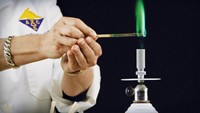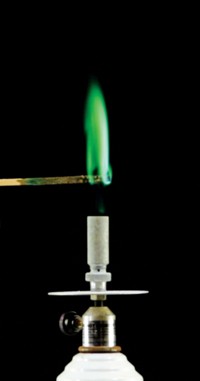Advertisement
Grab your lab coat. Let's get started
Welcome!
Welcome!
Create an account below to get 6 C&EN articles per month, receive newsletters and more - all free.
It seems this is your first time logging in online. Please enter the following information to continue.
As an ACS member you automatically get access to this site. All we need is few more details to create your reading experience.
Not you? Sign in with a different account.
Not you? Sign in with a different account.
ERROR 1
ERROR 1
ERROR 2
ERROR 2
ERROR 2
ERROR 2
ERROR 2
Password and Confirm password must match.
If you have an ACS member number, please enter it here so we can link this account to your membership. (optional)
ERROR 2
ACS values your privacy. By submitting your information, you are gaining access to C&EN and subscribing to our weekly newsletter. We use the information you provide to make your reading experience better, and we will never sell your data to third party members.
Safety
Improving Chemistry Demonstration Safety
String of recent incidents prompts calls for stricter controls
by Jyllian Kemsley
November 17, 2014
| A version of this story appeared in
Volume 92, Issue 46
Four fires from educational demonstrations have injured 22 children and two adults since the start of September. Calling such incidents a national problem, the Chemical Safety & Hazard Investigation Board (CSB) on Oct. 30 released a safety bulletin with recommendations for preventing them.

On Sept. 3, a demonstrator at a museum in Reno, Nev., was attempting to create a colored “fire tornado” when she poured methanol from a 4-L container onto a smoldering cotton ball. On Sept. 15, a teacher at a high school in Denver was demonstrating flammable properties when he poured methanol from a 4-L container onto an open flame. On Oct. 20, a Cub Scout group trying to produce a green flame poured methanol-containing antifreeze from a 355-mL bottle onto a fire in Raymond, Ill. And on Oct. 31, high school students in Chicago were also using methanol to create a green flame.
In at least the first three cases—the fourth is still being investigated—the fire propagated back into the fuel bottles and ignited the remaining liquid, CSB investigator Mark Wingard says. Pressure built up in the containers and the fiery fluid was expelled, burning people in the vicinity.
CSB Recommendations
◾ Implement strict safety controls—written procedures, training, and personal protective equipment—when lab demonstrators are handling hazardous materials.
◾ Conduct a thorough hazard review before performing any activity with flammable chemicals.
◾ Avoid using bulk containers of flammable liquids in education demonstrations—separately dispense only the amount needed.
◾ Provide a safety barrier between any activity involving flammable chemicals and the audience.
In the Denver incident, the fire “shot out about 12 feet and hit a student in the chest, resulting in serious burn injuries to the student,” the CSB bulletin says. The teacher faces charges of misdemeanor assault. In Nevada, the state worker safety agency fined the museum $2,100.
“These educators see others doing these demonstrations safely and don’t think about the hazards, only the educational benefit the demonstrations have,” Wingard says. The four incidents, plus at least one more in New York, come less than a year after CSB released a video warning of demonstration fires.
CSB Chairman Rafael Moure-Eraso would like educators to reconsider whether it is necessary to do demonstrations involving hazardous materials. “There are safer ways to do these demonstrations and convey the same educational information,” he says.
When demonstrations involving hazardous materials are judged to be necessary, CSB recommends safety controls that include written procedures, training, and personal protective equipment. Educators should also conduct a thorough hazard review of activities, avoid using bulk containers of flammable liquids when performing demos, and provide a safety barrier between the activity and the audience.
The American Chemical Society’s Division of Chemical Health & Safety offers a discounted rate to members of the American Association of Chemistry Teachers for safety workshops held at ACS national and regional meetings.
Calais Weber was 15 years old when her chemistry teacher poured methanol from a 4-L bottle onto an open flame during a flame test demonstration in 2006. Weber suffered burns over 40% of her body.
“I came very close to dying from my injuries,” Weber said at an Oct. 30 press briefing about CSB’s new safety bulletin. “My greatest fear is that eventually there will be a child [who] won’t be as lucky as I was to have survived.”
On chemical demonstrations, she takes a harder line than CSB. “It is my belief that until there exists a standard mandatory protocol for training all science teachers, there is no reason for methanol to be used in classrooms. My education and love for chemistry were not fostered by seeing a demonstration in person, and it would not have been hindered by simply watching a video of it being performed in a controlled setting by trained chemists,” she said.




Join the conversation
Contact the reporter
Submit a Letter to the Editor for publication
Engage with us on Twitter